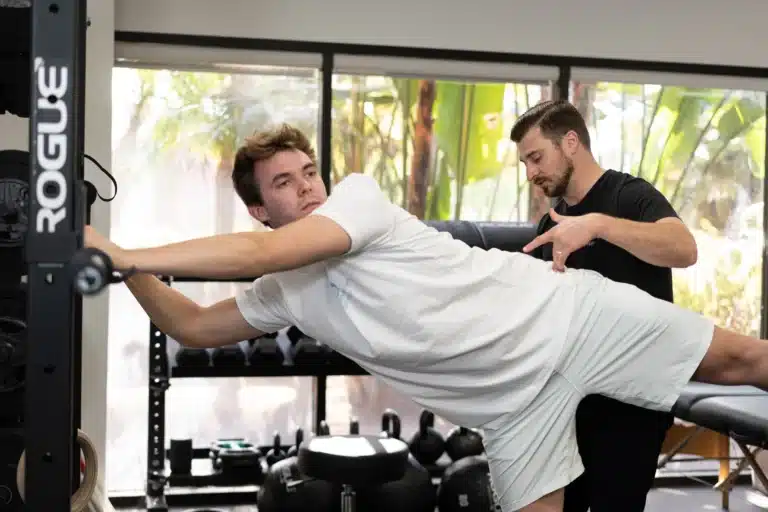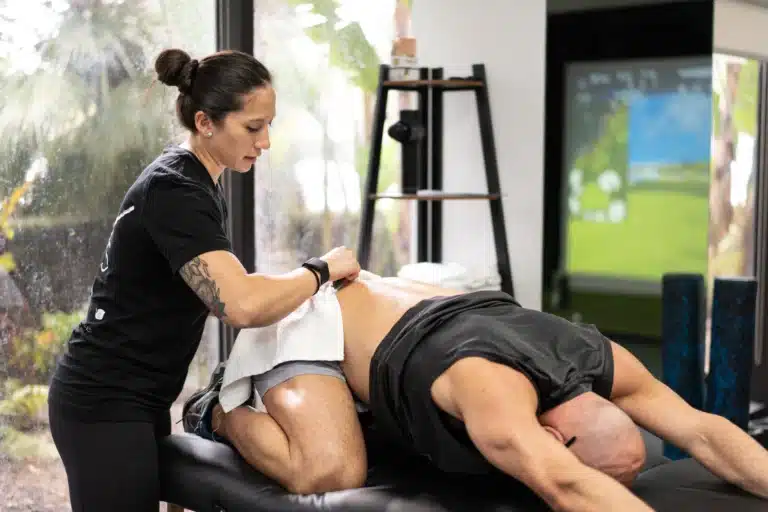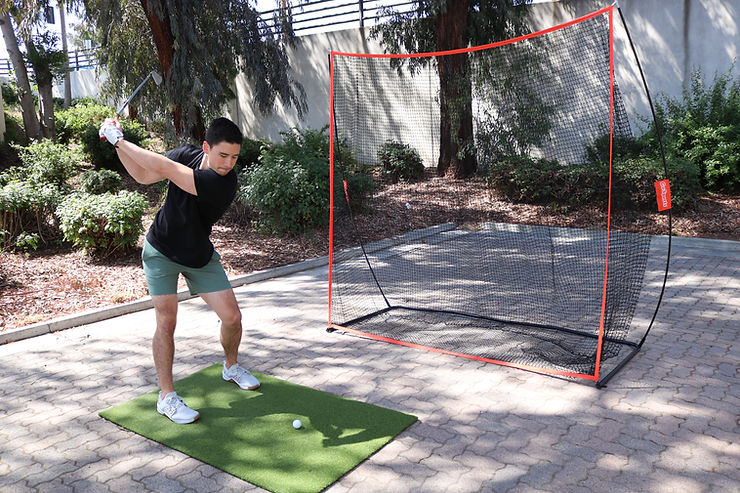Shoulder instability affects a significant number of people, with nearly 2% of the general population experiencing symptoms such as pain and limited mobility. Effective rehabilitation programs, like shoulder flexion and rotator strengthening, are crucial in managing this condition and preventing when the shoulder joint is unable to stay in its optimal position; it can lead to shoulder instability symptoms such as shoulder pain, discomfort, and limited mobility.
Understanding the types of shoulder instability is crucial for effective treatment and rehabilitation. This includes recognizing recurrent instability, traumatic dislocation, and partial dislocations. Targeted exercises play a crucial role in managing and improving shoulder stability, helping individuals regain function and reduce symptoms, ultimately providing shoulder pain relief.
In this article, we will explore the causes, symptoms, and treatment options for shoulder instability and delve into the best exercises for enhancing shoulder stability.
Causes of Shoulder Instability
Traumatic Injuries
One of the primary causes of shoulder instability is traumatic dislocation. This can occur from events such as falls, sports injuries, or accidents that cause the shoulder joint to dislocate or partially dislocate, requiring a closed reduction to reposition the unstable shoulder. If not properly treated and managed, these incidents can lead to future dislocations. When the shoulder is forced out of its normal position, the ligaments, tendons, and muscles around the joint can be damaged, leading to instability.
Atraumatic Causes
Shoulder instability can also arise from atraumatic causes, meaning it occurs without a specific injury, often involving repetitive overhead motion. This can result from repetitive overhead movements, such as those performed in swimming or throwing sports, which gradually stretch and weaken the shoulder’s supporting structures. Genetic factors and conditions such as Ehlers-Danlos syndrome can also contribute to atraumatic shoulder instability.
Symptoms of Shoulder Instability
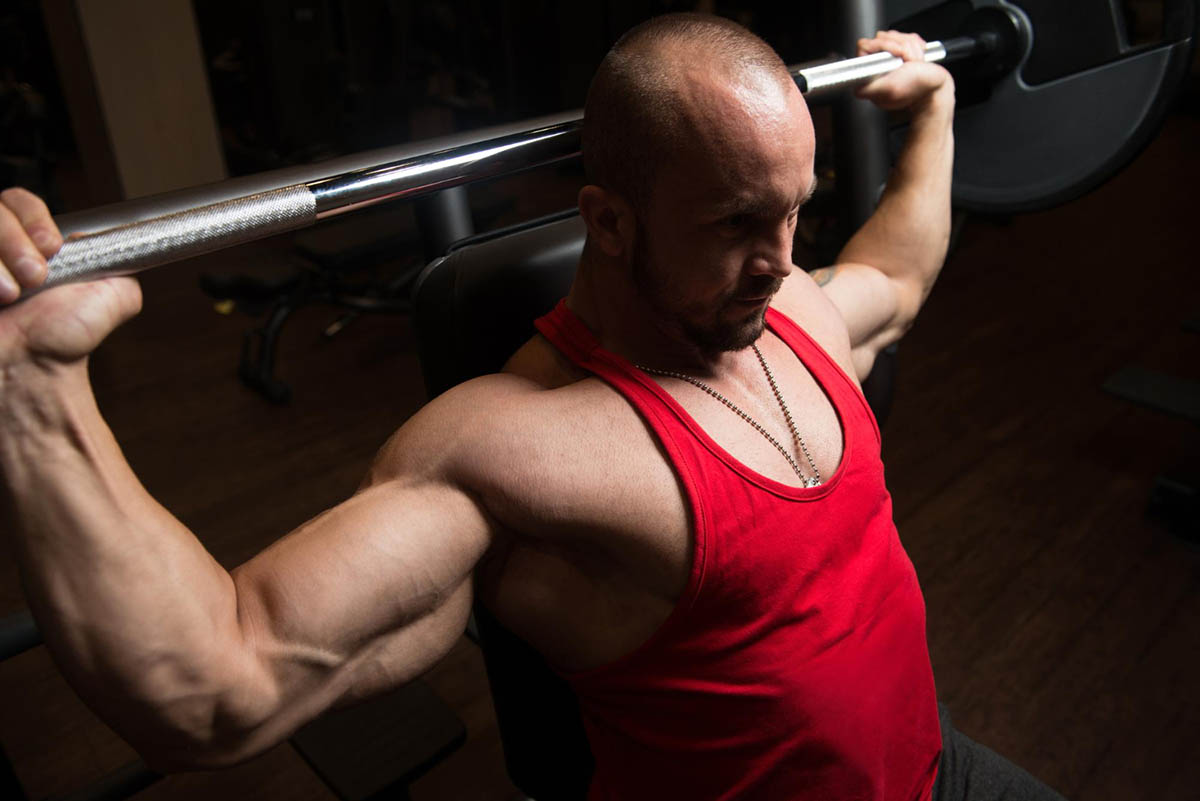
Pain and Discomfort
Individuals with shoulder instability often experience shoulder pain and discomfort, particularly during activities that involve lifting, reaching, or overhead movements. The pain may be sharp or dull and can be localized to the front, back, or shoulder socket.
Feeling of Shoulder Slipping
A common symptom of shoulder instability is a sensation that the shoulder is slipping out of place or feels loose. This can occur during specific movements or activities, causing a lack of confidence in the shoulder’s ability to function properly.
Shoulder Instability Treatment Options
Treatment for shoulder instability often involves a combination of physical therapy, lifestyle modifications, and, in some cases, surgical intervention. The goal of treatment is to restore stability to the shoulder joint, reduce pain, and improve overall function.
The Role of Physical Therapy
Physical therapy is a cornerstone of shoulder instability treatment. It focuses on joint stability, improving flexibility, and enhancing proprioception (the body’s ability to sense joint position). A thorough physical exam helps tailor the therapy to address recurrent instability and prevent future dislocations. At The Movement Schopp, we adopt a comprehensive approach to shoulder rehabilitation, tailoring exercise programs to meet individual needs.
The Movement Schopp’s Approach
At The Movement Schopp, our approach to treating shoulder instability involves a thorough assessment of each patient’s shoulder health. We design personalized exercise programs that address specific weaknesses and imbalances, incorporating a variety of strengthening, flexibility, and stabilization exercises to promote optimal recovery.
Shoulder Instability Exercises
Rotator Cuff Strengthening Exercises
The rotator cuff muscles play a vital role in stabilizing the shoulder joint. Strengthening these muscles can help improve shoulder stability and reduce the risk of shoulder dislocations. Focusing on the external rotators and rotator cuff tendons is essential for maintaining a stable base in the shoulder joint.
External Rotations
Shoulder external rotations can be performed using resistance bands or dumbbells. To do this exercise, hold the band or weight with your elbow bent at 90 degrees and rotate your arm outward, keeping your shoulder relaxed and close to your body. The starting position for this exercise is crucial. Individuals performing shoulder rehabilitation exercises such as shoulder blade squeezes and resisted rows should aim to repeat these movements. Individuals performing shoulder rehabilitation exercises such as shoulder blades 8 to 12 times per session for optimal results.
Internal Rotations
Internal rotations are the opposite movement of external rotations. Use a resistance band or dumbbell, and perform shoulder internal rotations by rotating your arm inward, keeping your elbow at a 90-degree angle and close to your body. Perform 8 to 12 repetitions per session.
Scapular Stabilization Exercises
Stabilizing the scapula (shoulder blade) is essential for maintaining proper shoulder mechanics and preventing shoulder impingement and instability.
Scapular Retraction/Protraction
Scapular retraction involves squeezing the shoulder blades together, while scapular protraction involves moving the shoulder blades apart. These exercises can be performed in various positions, such as seated or lying down, and should be repeated 8 to 12 times per session to prevent shoulder impingement.
Scapular Setting
The scapular setting is a foundational exercise in which you gently pull your shoulder blades down and together, holding the position for a few seconds to create a stable base. Proper alignment of the glenoid fossa with the head of the humerus is vital for shoulder stability.
Shoulder Flexibility and Range of Motion Exercises
Improving shoulder flexibility and range of motion can help reduce pain and enhance overall shoulder function, contributing to a healthy body and better human body mechanics.
Pendulum Swings
Pendulum swings are performed by bending forward at the waist and letting your shoulder-relaxed arm hang down. Gently swing your arm in small circles or back and forth, using gravity to assist the movement. This exercise helps improve joint mobility.
Crossover Arm Stretches
To perform a crossover arm stretch, bring one arm across your chest and use the opposite hand to pull the arm closer to your body gently. Hold the stretch for 15-30 seconds and repeat on the other side. This helps in stretching the posterior shoulder muscles.
Dynamic Stabilization Exercises
Dynamic stabilization exercises are designed to improve the shoulder’s ability to remain stable during shoulder movement. Activity modification is an important part of these exercises to avoid overloading the mobile joint.
Resisted Rows
The upper arm bone and joint capsule are crucial in exercises like resisted rows and prone shoulder extension. Resisted rows can be done using resistance bands or weights. Pull the band or weight towards your body while keeping your back straight and shoulders down. This exercise strengthens the muscles of the upper back and shoulders, enhancing stability and preventing shoulder injury.
Prone Shoulder Extension
Lie face down on a bench or stability ball with your arms hanging down. Lift your arms straight back, keeping your elbows slightly bent. This exercise targets the muscles in the back of the shoulder and upper back. Simple exercises and proper technique can help in managing shoulder instability effectively.
Tips for Safe Exercise Progression
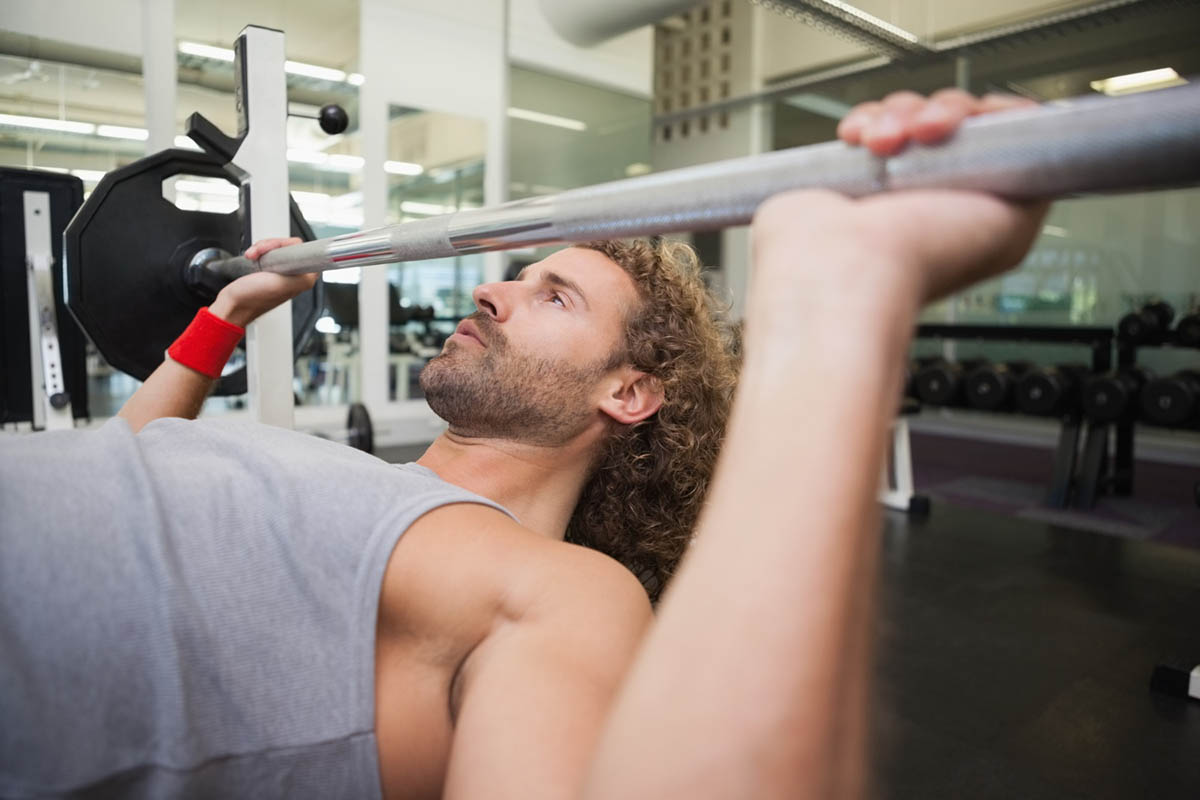
- Start with low resistance and gradually increase as your strength improves.
- Focus on proper form to avoid compensatory movements and further injury.
- Incorporate a variety of exercises to target different muscle groups and prevent overuse injuries.
- Consult with a physical therapist to tailor an exercise program to your specific needs.
Conclusion
Shoulder instability can significantly impact daily life, but with the right exercises and treatment approach, stability and function can be restored. Research indicates that up to 1.7% of the population suffers from shoulder instability, which can significantly impact daily activities and overall quality of life. At The Movement Schopp, we are dedicated to helping individuals overcome shoulder instability through personalized exercise programs and comprehensive care. This includes addressing recurrent dislocation and ensuring that each exercise contributes to maintaining a stable base and healthy body mechanics. By incorporating targeted strengthening, flexibility, and stabilization exercises, you can improve shoulder stability and reduce shoulder pain.
FAQs
How do you fix shoulder instability?
Fixing shoulder instability typically involves a combination of physical therapy, strengthening exercises, and, in some cases, surgical intervention, depending on the type of shoulder instability. Physical therapy focuses on strengthening the muscles around the shoulder joint, improving flexibility, and enhancing proprioception.
What increases shoulder stability?
Shoulder stability can be increased through targeted exercises that strengthen the rotator cuff and scapular muscles, improve shoulder flexibility, and enhance joint proprioception. Consistent exercise and proper technique are key to improving stability.
Can physio fix shoulder instability?
Yes, physical therapy (physio) can effectively fix shoulder instability for many individuals. By implementing a structured exercise program that includes rotator cuff and scapular muscle strengthening, flexibility exercises, and dynamic stabilization, physio can help restore shoulder stability and function.


